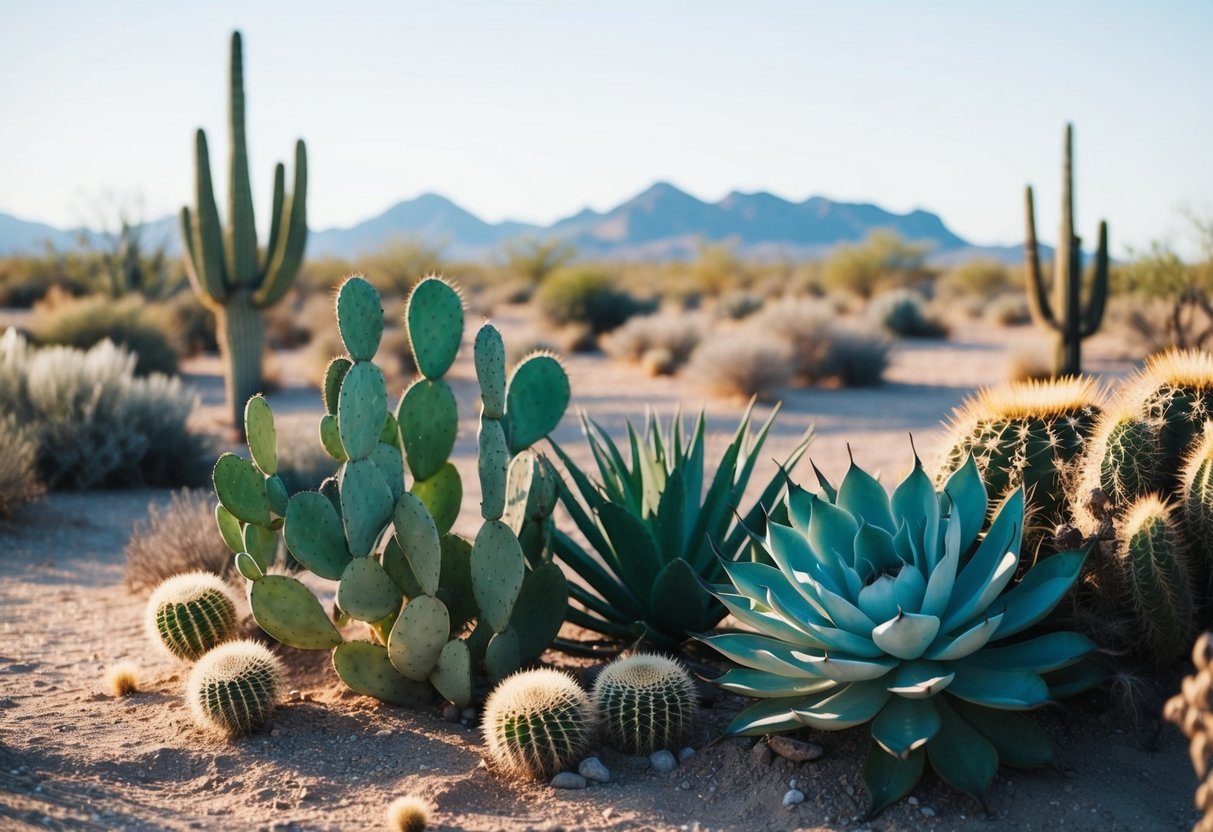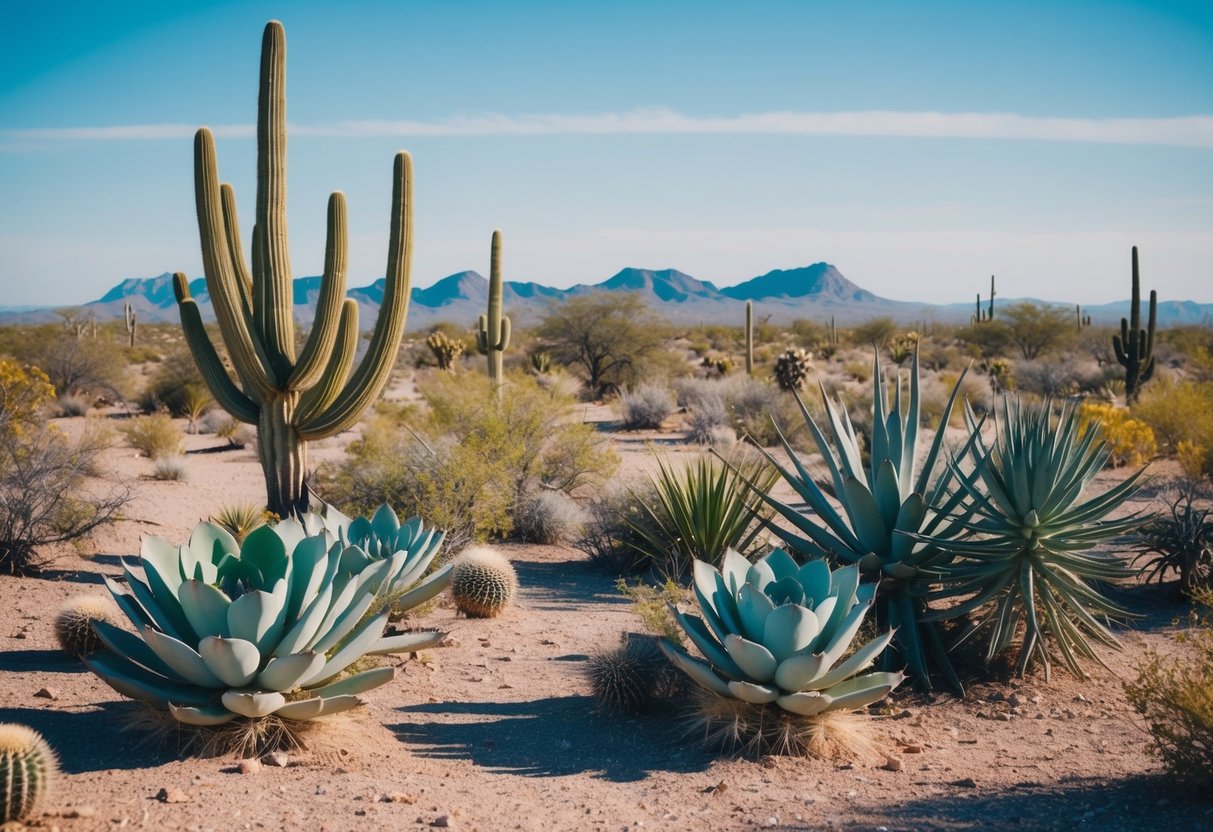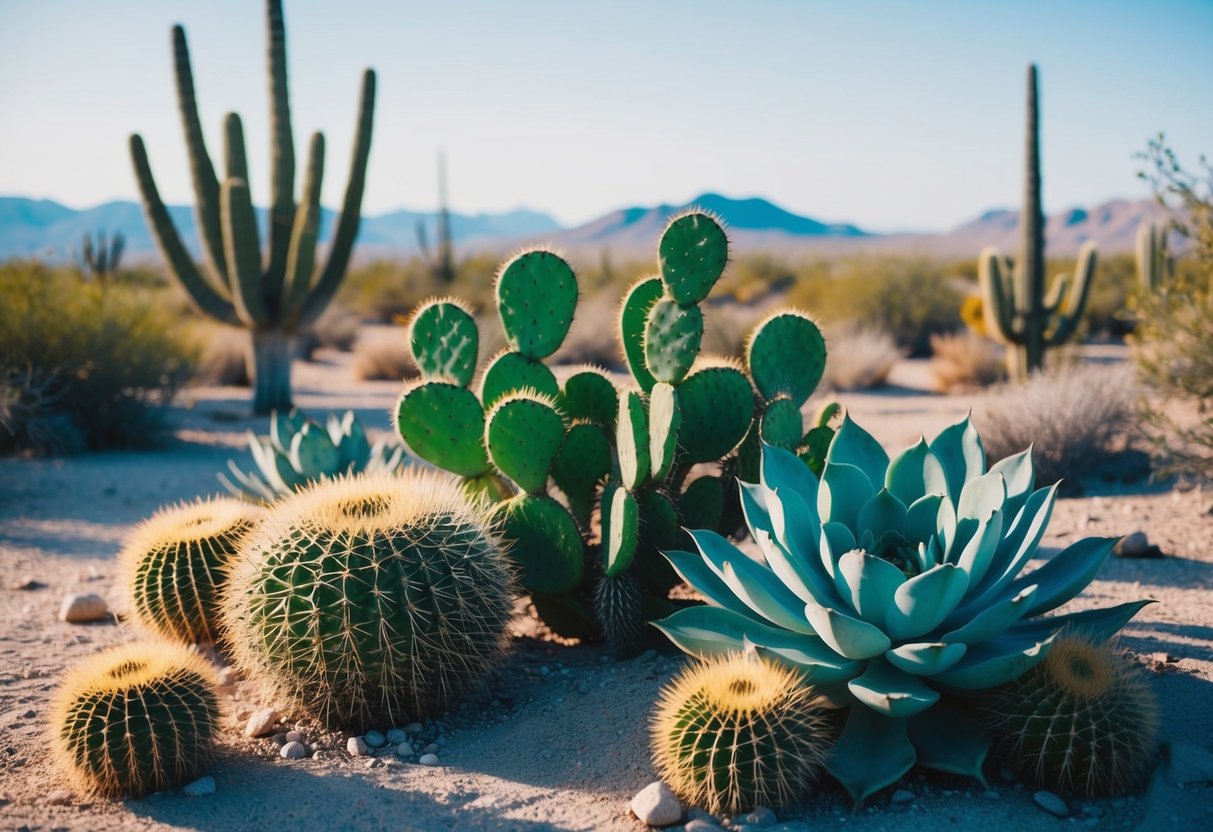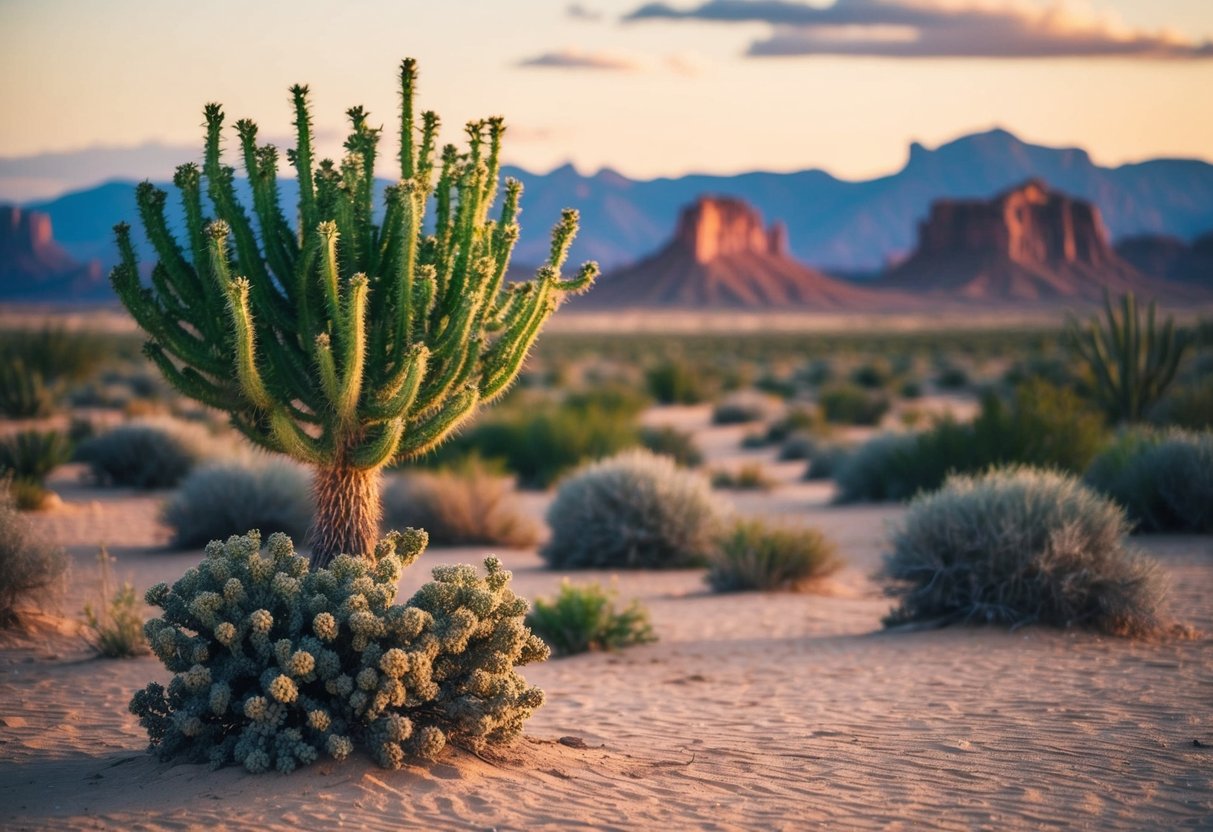Is There a Plant That Doesn’t Need Water? Exploring Nature’s Rarities
You’re probably wondering if there’s a plant that doesn’t need water at all. The truth is, every plant needs some water to survive, but some plants require so little that it seems like they hardly need any water at all. These are known as drought-tolerant plants, and they’re perfect for homes or gardens where you might forget to water regularly.

Imagine having plants like snake plants, poppies, or jade plants in your home. These are not just beautiful but are also low-maintenance. For your indoor plants, consider keeping a Pothos in that dim bathroom corner or a Haworthia on your windowsill.
Picking the right plants for your space can whisk away your watering worries. From the striking Desert Rose to the vibrant Lantana, these plants are not just survivors; they’re a testament to nature’s incredible adaptability. Dive into the world of these resilient green wonders and discover how easy plant care can be.
Understanding Plant Water Requirements

Plants need water for growth, but not all require the same amount. Some are specially adapted to thrive with minimal water. These plants, known as drought-tolerant or drought-resistant, can survive in arid conditions.
Water as a Crucial Resource for Plant Survival
Water is essential for a plant’s life. It helps in photosynthesis, where plants convert sunlight into energy. Water also aids nutrient transport from the soil to various plant parts. Without water, these processes can’t occur effectively, and plant health suffers.
Some plants have evolved to require less water, which makes them incredible survivors in dry climates. These adaptations allow them to maintain necessary physiological functions even with limited moisture available.
Adaptations to Arid Conditions
Drought-tolerant plants have developed unique adaptations. Some have thick leaves that store water. Others, like those with waxy coatings or fine hairs, reduce water loss by minimizing evaporation.
Some plants can close their stomata, the tiny openings on leaves, during hot days to prevent water loss. Others have extensive root systems to tap into deep underground water sources. This allows drought-resistant plants to continue flourishing when water is scarce, making them ideal choices for dry gardens.
Types of Low-Water Plants

Low-water plants are perfect for gardens in dry areas. You can have beautiful greenery without needing a lot of water. This section will explore different kinds of drought-tolerant plants, including succulents, cacti, and flowering plants.
Succulents and Their Water-Storing Abilities
Succulents are plants that store water in their leaves. This ability lets them thrive in dry climates. Some popular succulents include aloe, jade plant, and sedum.
Aloe vera is not only a drought-tolerant plant but also offers health benefits. The jade plant is another succulent ideal for indoor settings. Sedum, known for its thick, fleshy leaves, can decorate your garden with its unique, colorful appearance. Succulents need minimal watering, making them a great choice for busy people.
Cacti: The Champions of Dry Habitats
Cacti are perhaps the best-known low-water plants. With their thick, protective skin and water-storing tissues, they are built for desert life. Most cacti thrive with very little water, sometimes going weeks without a drop.
Many cacti have unique shapes and sizes, adding visual interest to any garden. Some even produce beautiful flowers. You can pair them with other plants like lavender cotton and rock daisy to create a stunning, low-water garden. Cacti are perfect if you’re looking for hardy plants that require very little care.
Drought-Tolerant Flowering Plants
If you love flowers, consider growing drought-tolerant varieties like lavender, bougainvillea, and verbena. These plants not only survive with little water but also bring bursts of color to your garden. Lavender requires full sun and has a soothing fragrance.
Bougainvillea is a hardy shrub that blooms in vibrant colors and tolerates dry conditions. Verbena also produces bright flowers and is easy to care for. Other options include oleander and sage, both known for their resilience and beauty. These plants can enhance any landscape while conserving water.
Caring for Low-Water Houseplants

Caring for low-water houseplants involves understanding their specific needs and how they adjust to different environments. This guide covers ideal conditions, watering tips, and neglect-tolerant plants that suit busy lifestyles.
Ideal Conditions for Indoor Drought-Tolerant Plants
Many low-water plants thrive indoors with the right conditions. Snake plants and ZZ plants adapt well to low light, making them perfect for dim areas. Keep your pothos and dracaena in bright but indirect sunlight for best growth. Air plants can also do well without soil, needing only occasional misting.
Maintaining the right temperature is crucial. Most drought-tolerant houseplants prefer temperatures between 60°F and 75°F. Ensure there’s good air circulation to prevent mold and mildew.
Choose pots with drainage holes. This helps to avoid overwatering, which is the number one mistake for these plants. Each plant has its preferred soil type; for example, succulents like a sandy mix while snake plants prefer well-draining potting soil.
Tips for Minimal Watering
Watering these houseplants is straightforward. Allow the soil to dry out between waterings. For snake plants and pony tail palms, water once every few weeks. Air plants need a soak every couple of weeks, and misting a few times a week.
Create a schedule to prevent overwatering. It’s better to underwater than overwater. Use a moisture meter or simply stick your finger into the soil. If it feels dry an inch or two down, it’s time to water.
Watch the leaves for signs of distress. If they’re wilting or yellowing, adjust your watering habits accordingly. Over time, you’ll get a feel for what each plant needs. Consistency helps keep them healthy.
Common Houseplants That Thrive on Neglect
Several plants are perfect for those who may forget to water often. The cast iron plant is incredibly tough and can survive in low light and minimal water. Pothos is another hardy plant that grows well even if neglected for a while.
The string of pearls and zebra plant add a decorative touch with their unique appearance, needing only occasional watering. Spider plants are versatile too, flourishing with infrequent care.
Your friendly zebra plant adapts easily and is relatively undemanding. Investing in these plants lets you enjoy greenery without constant upkeep, ideal for a busy lifestyle.
Outdoor Plants and Water Conservation

When planning a garden in dry climates, choosing drought-resistant plants is key. You can create a stunning landscape that conserves water by using smart plant selections and techniques.
Landscaping with Drought-Resistant Varieties
Choosing the right plants makes a big difference. Drought-resistant plants like globe thistle and yarrow thrive with minimal watering. These plants can add vibrant colors and textures to your garden. Consider using perennials such as black-eyed Susan and poppy. They are not only beautiful but also require less water once established.
For a structured look, try shrubs like santolina, perovskia, and rosemary. These not only save water but also provide pleasant fragrances and foliage variety. Rock gardens can be a great option, as they use heat-tolerant plants and provide excellent drainage. You might also want to explore using large stones and rocks to create interest and help retain moisture in the soil.
Creating a Water-Efficient Garden
Using mulch is essential. A layer of mulch helps retain moisture, suppress weeds, and improves soil quality. It’s an easy way to reduce water needs. Look for organic options like wood chips or shredded bark to benefit your garden’s ecosystem.
Designing a garden with zones can also improve water efficiency. Grouping plants with similar water needs together prevents over-irrigation. You could incorporate ground covers like nepeta to reduce water evaporation from the soil. Also, consider installing a drip irrigation system. It targets water directly at the base of plants, minimizing waste.
These practices help in making your outdoor spaces not only beautiful but also environmentally friendly.
Myth-Busting: Is there a Plant That Never Needs Water?

You might have heard about plants that supposedly survive without any water at all. In reality, all plants need some water, but some need very little. This guide will dive into what you need to know about these hardy plants and how to care for them.
Exploring the Truth About ‘No-Water’ Plants
While it would be amazing to have plants that thrive without water, they don’t exist. Even the toughest of plants, like lithops (often called living stones) and stonecrop, require water, albeit infrequently. These plants store moisture in their leaves, allowing them to go longer between waterings.
Crassula and echeveria are other examples of hardy plants. They don’t need constant attention but still rely on water occasionally. The important part is understanding their environment. Many of these plants originate from arid regions where they adapt to store water for dry spells.
Maintenance and Care for ‘Lowest-Water’ Species
Caring for low-water plants like the sago palm or desert rose is relatively straightforward. These species prefer well-draining soil to prevent root rot. You should water these plants thoroughly but let the soil dry completely before the next watering session.
Mulch can be used to help retain soil moisture. When choosing a location, ensure they have plenty of sunlight. Though minimal, care and attention will keep these plants healthy and vibrant. Try not to over-water them, as it can do more harm than good. Remember, these plants are used to thriving in dry conditions!







